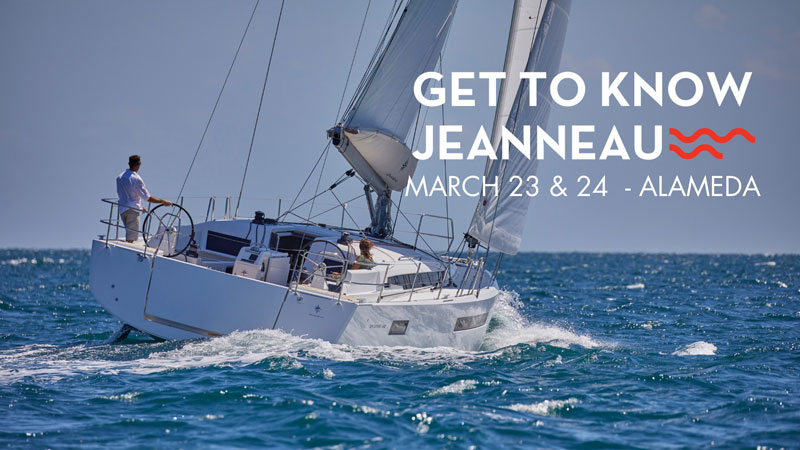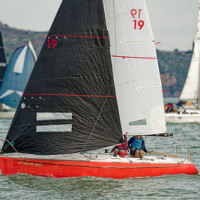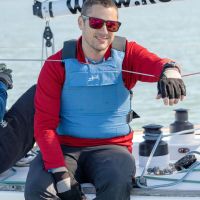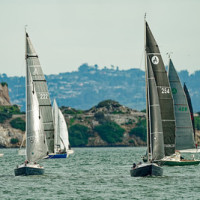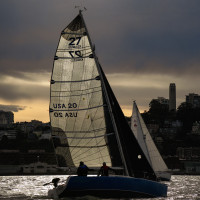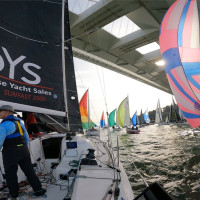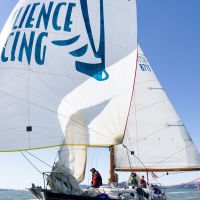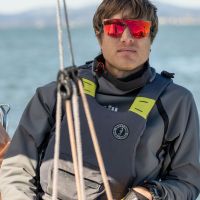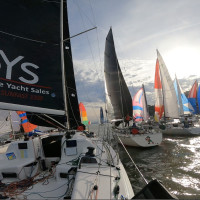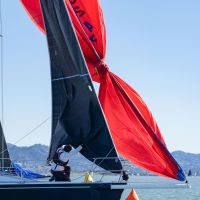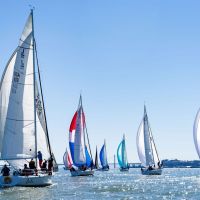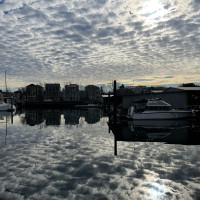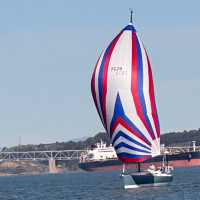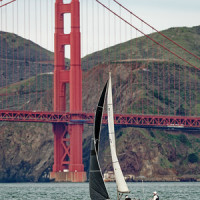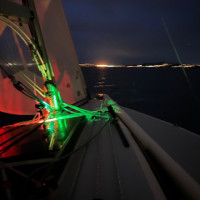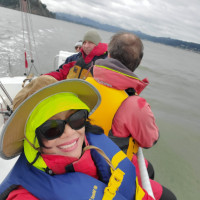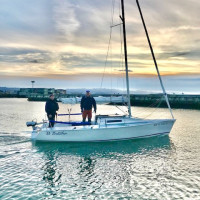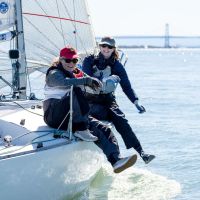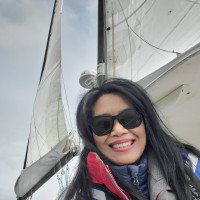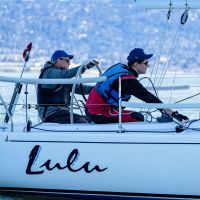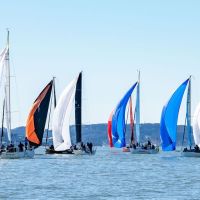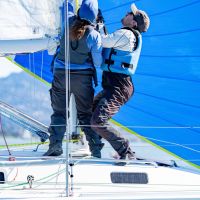
It’s a Full Gale at Our Desk, But We’re Reefed Down and Carrying On
The news crossing our desk always seems to be a full gale. We thought we’d break it down to a few light zephyrs to keep it closer to a pleasant Sunday sail.
We hope you didn’t miss this news! Cole Brauer has become the first US woman to sail solo, nonstop, around the world.
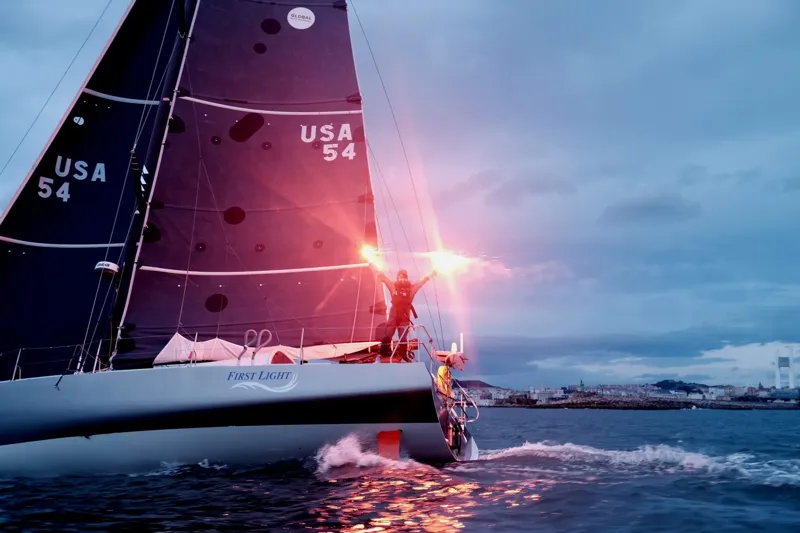
From the Global Solo Challenge:
“Today [Thursday 3/7] at 07:23 UTC, 8:23 a.m. local time [00:23 PST], Cole Brauer took second place in the Global Solo Challenge after Philippe Delamare and became the first US female to sail solo, nonstop, around the world, by the three great capes. Less than 200 people achieved this feat since Sir Robin Knox-Johnston became the first man to do so in 1969. Kay Cottee was the first female to complete a solo circumnavigation in 1988. Cole Brauer is the 18th female and first US female to enter the history books for one of the toughest sporting endeavours there are. She took 130 days 2 hours 45 minutes and 38 seconds, setting a new reference time for a solo circumnavigation on a 40ft boat improving by around 7 days the previous record set by the late Guo Chuan in 2016. It was a long and emotional day which started well before sunrise after a sleepless night monitoring Cole’s progress, meeting her at sea, watching her sail at First Light into A Coruña and celebrating her outstanding achievement. Well done Cole!”
A truly spectacular performance and very appropriate to celebrate on today’s International Women’s Day.
————————————-
Worth noting again — The 250-ft three-masted Stad Amsterdam, which arrived under the Golden Gate on Wednesday, is now located at piers 30/32, San Francisco, and will be open for free public tours on Tuesday, March 12, from 10 a.m. to 4 p.m. Photo ID required.
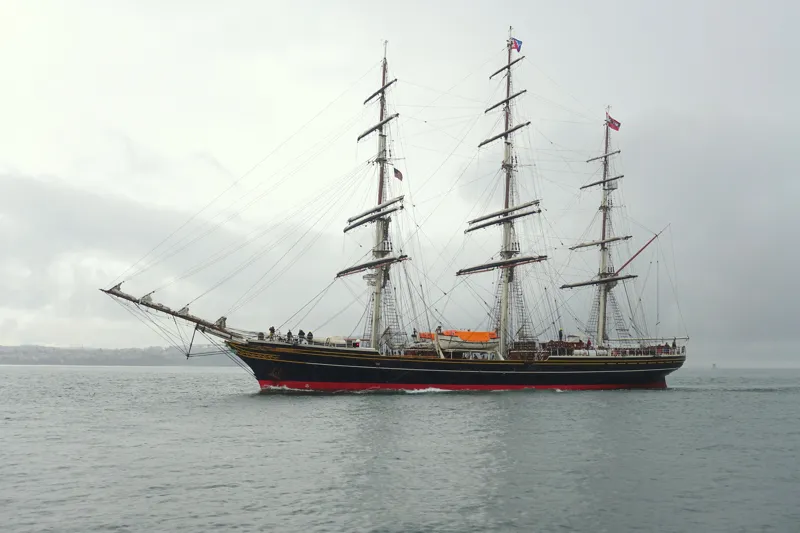
————————————-
The 750-mile R2AK (Race to Alaska) starts Sunday, June 9.
For some reason, people are inspired to sign up after reading this invitation: “This isn’t for everyone. It’s like the Iditarod, on a boat, with a chance of drowning, being run down by a freighter, or eaten by a grizzly bear. There are squalls, killer whales, tidal currents that run upwards of 20 miles an hour, and some of the most beautiful scenery on earth.”
You can sign up here. There’s $10,000 involved and some “side bets” they explained in their recent newsletter. One “side bet” you can win, which they think will attract sailors, is described below. You can hear a podcast with R2AK Race Boss Jesse Wiegel on The Boat Geeks here.
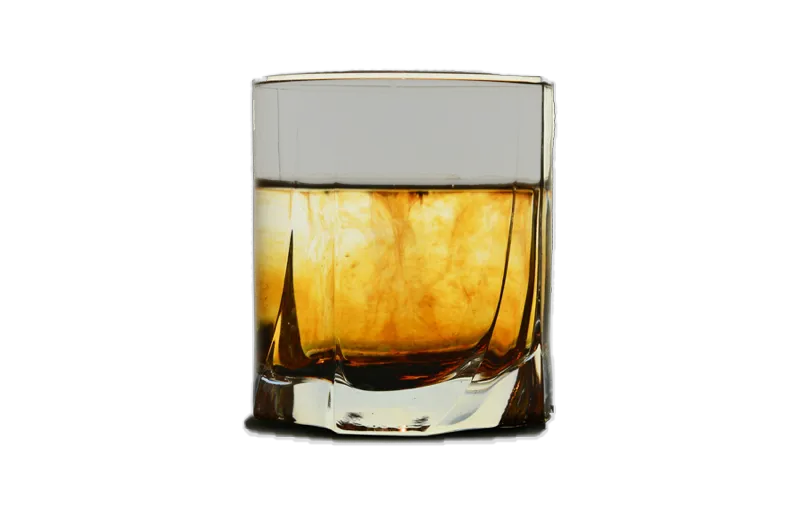
————————————-
2024 is the 70th Anniversary of the Bullship Regatta — Happening April 6.
John Dukat put together this year’s poster and sent in the photo below of Jim DeWitt, adding, “I can’t do a topless photo of the Honorary Bullship PRO back in 1954. But I can do a Jimmy DeWitt topless photo.” We miss Jim.
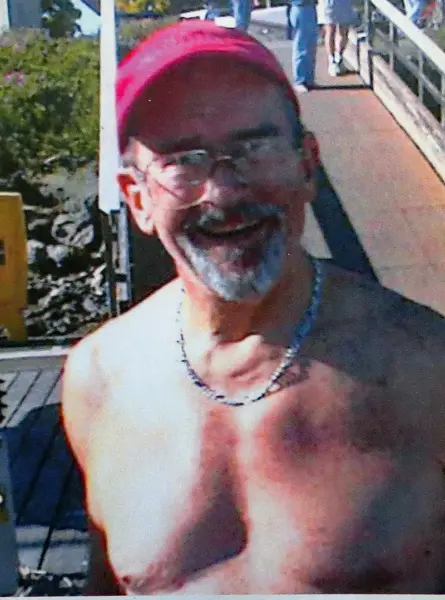
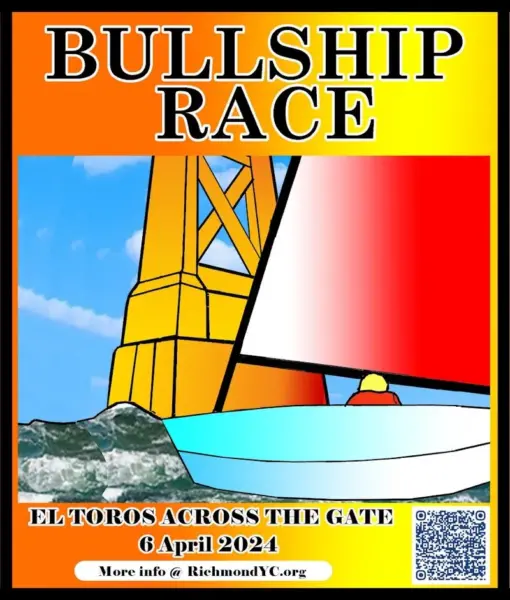
If you’re looking to get sunburned, soaking wet, make new friends and sail/race more this summer you could attend the Berkeley Yacht Club Crew Party this evening and put your name on our Latitude 38 Crew List here. More sailing is a good thing.
The West Coast sailing news comes through our office like the wind through the Golden Gate on a July day: usually brisk and often gusty. This reefed-down version of a few of the stories should help keep it all comfortable.
Keep up with the weekly sailing news and stories by subscribing to the three-time-weekly ‘Lectronic Latitude here.
Help Name Alameda Marina’s New Park ‘Svendsen Maritime Park’
Alameda and the Bay Area lost more than a great friend, sailor, and maritime business entrepreneur with the passing of Svend Svendsen in 2013. We lost a great piece of the maritime trades, heritage and culture that kept the island community of Alameda rooted in its maritime legacy. The local community is now working together to help honor Svend and his contributions to Bay Area boaters, with Svendsen’s Boat Works.
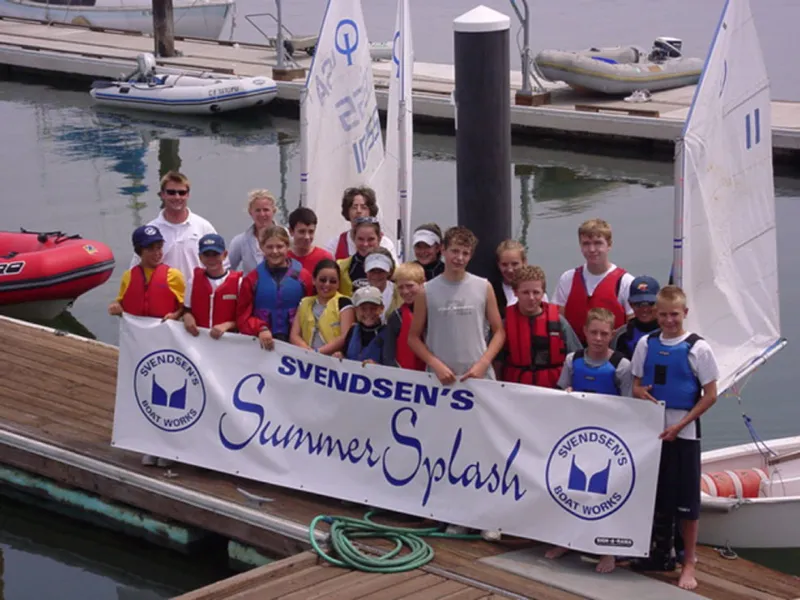
The Svendsen’s Marine & Industrial Supply ad in the current issue stated how you can help:
“We have a chance to name the new park at Alameda Marina ‘Svendsen Maritime Park,’ in honor of Svend Svendsen and the legacy of Svendsen’s Boat Works. If you have stories or memories of how Svend or the boat works made a difference in the community, in innovation, or in your life, we’d love to hear them. Your stories can help ensure the park carries a name that reflects the true spirit of Alameda’s maritime heritage.
“Here are some ideas to get you started:
- Memories of community events or initiatives Svend supported.
- How the Boat Works fostered a love for sailing and the sea in many of us.
- Stories of innovation, like the development of eco-friendly boatyard practices.
- The impact Svend had on individuals’ careers and lives, inspiring entrepreneurship and a passion for craftsmanship.
“Every story helps, no matter how big or small. Let’s make sure the park celebrates a legacy that has touched so many lives. Please email your stories to Justin Long at [email protected], and please also copy Svend’s daughter Sabrina at [email protected].
“Thank you so much for your help in honoring Svend!”
For those able to make a public comment at a town council meeting, we’ve been told it is scheduled to be on the agenda for the second meeting in April, which looks to be the third Tuesday of the month. Schedule here. We presume the agenda will get posted here.
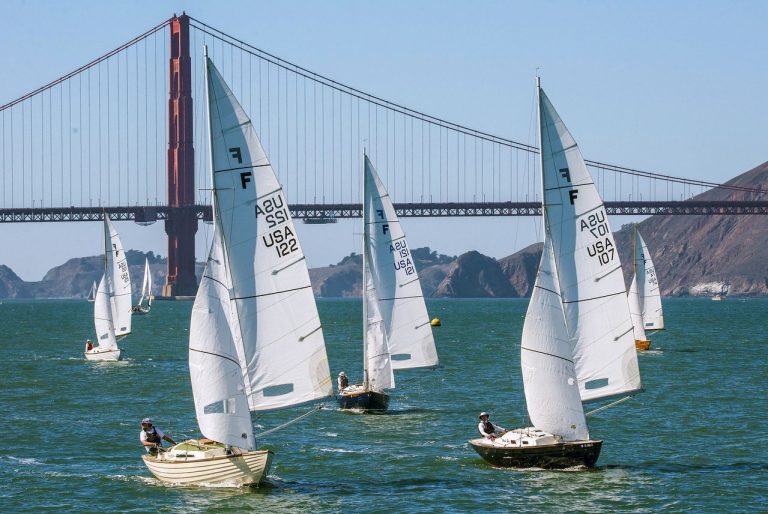
We think it’s a terrific way to honor the connection between land and sea, as well as honoring Svend Svendsen and the marine business he created that contributed so much to the lives of sailors, the working waterfront and the community of Alameda.
Want to make a friend smile? Give them a gift subscription to Latitude 38.
Get to Know Jeanneau at Club Nautique!
Check out the latest Jeanneau sail and powerboat models and find the perfect boat for you. RSVP TODAY!
March Letters Notes Robin Lee Graham’s ‘Dove II’ for Sale — In 1982!
In our March Letters column, sharp-eyed sailor Jonathan Ogle sent the following letter about the book that launched thousands of dreams and voyages: Dove.
“Thanks for posting the October 1982 issue of Latitude 38. That was the year I graduated from college, so the boats shown in all the ads are the good-looking, proper boats of my youth.
“I noticed a very famous boat for sale in the proto-Classy Classifieds on page 156: Dove II, an Allied Luders 33, described as a ‘world cruiser.’ That is the boat on which Robin Lee Graham completed his 1965-1970 circumnavigation, making him at the time the youngest singlehander to circle the world. What a serendipitous find on a pleasant trip down memory lane. (Or better yet, a pleasant voyage on the Sea of Memories!)”
Jonathan Ogle
Matson Navigation Company
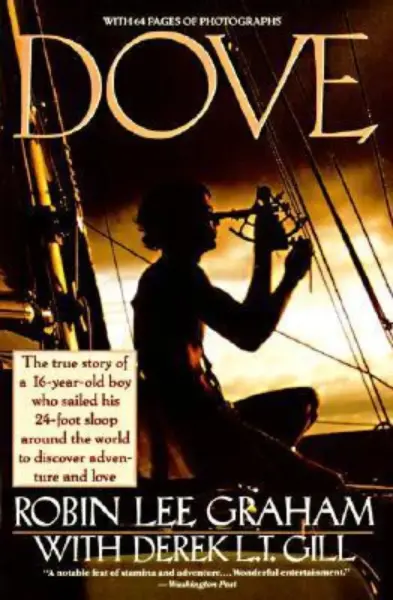
The voyage by 16-year-old Robin Lee Graham, who left Hawaii solo in a 24-ft Lapworth sloop named Dove, was a sensation at the time. The story in National Geographic, and the subsequent book, fueled our dreams and those of many sailing friends who could see great voyages on a boat that made the dream appear achievable. In fact, many followed in his wake, including our recent Good Jibes podcast guest Stephen Wolf. Stephen and his wife circumnavigated on No Name, a 24-ft folding plywood Piver trimaran, in 1971. Robin Lee Graham, Webb Chiles and Stephen Wolf are listed on our West Coast Circumnavigators’ List as sailors who have voyaged around the globe on 24-ft sailboats. Robin upgraded to the Luders 33 Dove II partway around.)
It’s amazing to think what Robin Lee Graham accomplished, and then also to see that Dove II appeared in our classifieds in October 1982! (Sorry, it’s been sold.)
You can buy the book Dove in Latitude 38’s online bookstore here, or at your favorite book source. Our little book shop is run by Bookshop.org, which contributes a portion of the proceeds to Latitude 38 and also local bookstores. You can see a map of bookstores they support here.
We’re amazed and thankful for Jonathan’s discovering this small item in the Latitude 38 archives. There are so many great stories from the past and today, and still many great boats for sale in our Classy Classifieds. A Cal 2-25 was listed for sale yesterday — a foot longer than Robin Lee Graham’s boat. It’s ready to take someone on their next great voyage.
You can sell your boat by listing it in our Classy Classifieds here.
San Francisco Sailors Doublehand 15th Caribbean 600 Race
Skipper Nathalie Criou and co-skipper Bérénice Charrez, two San Francisco Bay sailors and friends of Latitude 38, met up in Antigua for the Caribbean 600 last week. According to the Royal Ocean Racing Club, organizing the 15th race edition in collaboration with Antigua Yacht Club, Envolée was the smallest boat in the race and one of only two doublehanded boats to finish.
Since the first edition of the race in 2009, the race around 11 of the Leeward Islands in the Caribbean has evolved into one of the world’s most navigationally challenging of the 600-milers. The course starts at Fort Charlotte in English Harbour, Antigua, and heads north as far as Saint Martin, and south to Les Saintes off Guadeloupe, taking in Barbuda, Nevis, St. Kitts, Saba and St. Barth.
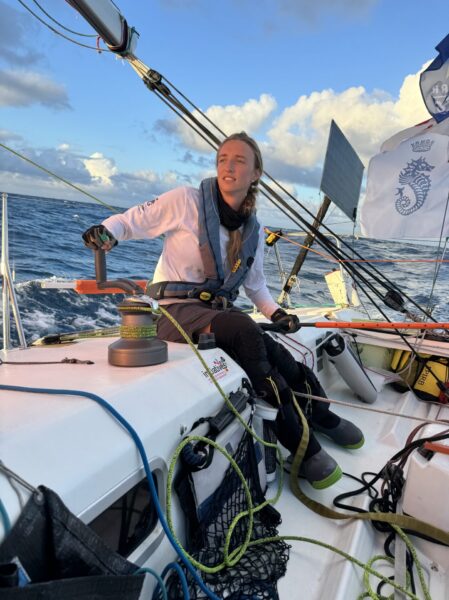
Most years, the Caribbean enjoys steady trade winds between 15 and 25 knots, and the occasional squall at night. Instead, our competitors had weak trades and a period of no wind in the forecast.
As Charrez is quick to note, about 500 of the 600 miles were upwind for the doublehanded team. “We probably sailed 1200 miles upwind if you count the tacks,” Charrez jokes. “Most of the time the sea state was pretty rough — the boat constantly heeled at [a] 25° angle, everything inside is moving with the waves slamming, and it’s hard to sleep in these conditions.”
Charrez and Criou have sailed together in San Francisco Bay, where Envolée rests in her home port at South Beach Harbor. Criou is a USCG-certified captain, and does deliveries, six-pack charters, and myriad other local sailing activities when she isn’t racing Envolée or working her full-time career in tech.
“Envolée is a Figaro 2, essentially a 33-ft offshore racing machine that used to be the support for professional solo racers in Europe,” Criou explains. “It’s a very robust little boat but it has no toilet on board, which apparently is a major deterrent!”
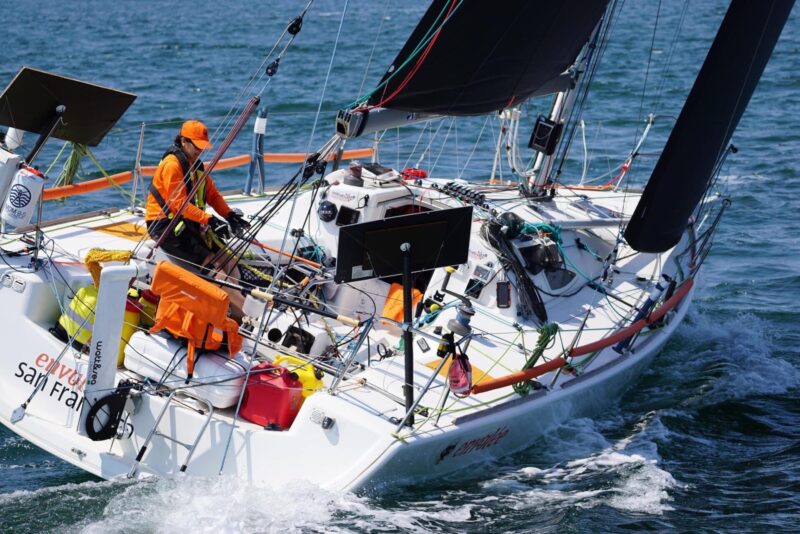
We wrote about Charrez’s adventures in the Volvo Ocean Race last June. Now she has set her sights on new goals — bringing tech to the extreme sport of offshore sailing. “Nathalie and I were both wearing some wearable sensors on our bodies underway, to monitor certain aspects of our physiology before, during and after the sail,” Charrez explains. As a professional sailor with a PhD in bioengineering and biomedical engineering from the University of California, Berkeley, she’s always been curious about the physical effects of the extreme environment offshore racers endure.
For the Caribbean 600 race, Charrez partnered with the University of Caen, which provided funding to conduct pre-sail and post-sail evaluations of other competing sailors who volunteered to participate in this groundbreaking scientific inquiry. Charrez had the participation of some badass sailing women like Dee Caffari, Marie Riou, Deborah Blair, and Elodie Mettraux, doing exercises and taking measurements on the docks in Antigua before the race began, and again after the race.
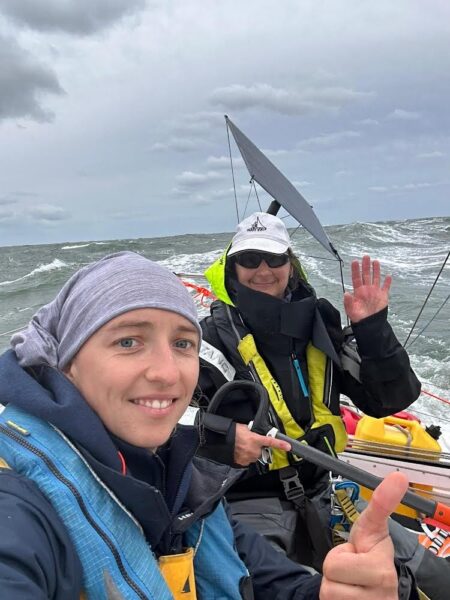
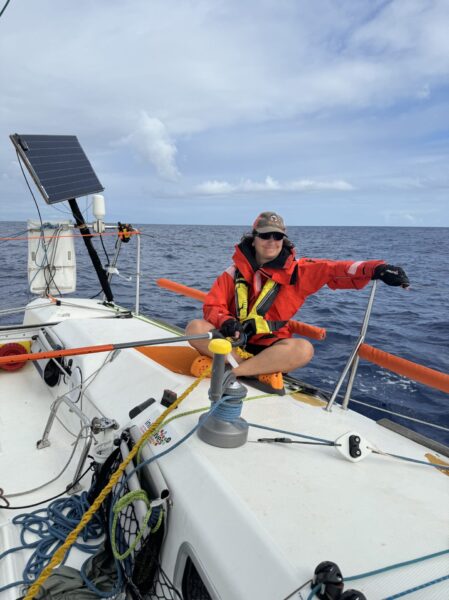
As Charrez reported, some of her wearable sensors worked out really well, and some didn’t at all. “Thanks to the sensors we had strapped to pretty much every bit of skin or bodily system, we could see that all this mental concentration and physical effort cost us between six and seven thousand calories a day,” Criou says. “And this is for a LIGHT-AIR race!”Of the successful monitors, the BodyCAP and glucose monitors delivered some interesting preliminary data. The BodyCAPs are capsules you swallow that monitor internal heat. They stay in your body 1-2 days before you pass them and take another capsule. Charrez said you really don’t feel anything, but they provide continuous data measuring your internal temperature to give insights to the body’s circadian rhythm.
Also interesting were the data from the glucose monitors that Charrez and Criou put on before departure — it just took a quick jab of a small needle inside the plastic housing to insert the sensor which stayed on their arm for the duration of the Caribbean 600 race. It showed some interesting results concerning the relationship between blood glucose spikes and stress, eating, and resting.
It will be interesting to see if the collected data lead to tips and tricks to help sailors with their ocean racing endurance, and perhaps their race results – stay tuned for more updates.
Sailagram: A Snapshot of February Sailing
Sailing in February saw us enjoying Valentine’s Day, aka “I love sailing day,” plus some wet and wild weather and summery weather. It’s been a bit all over the place!
Send your sailing photos to [email protected] to be featured in next month’s Sailagram.

